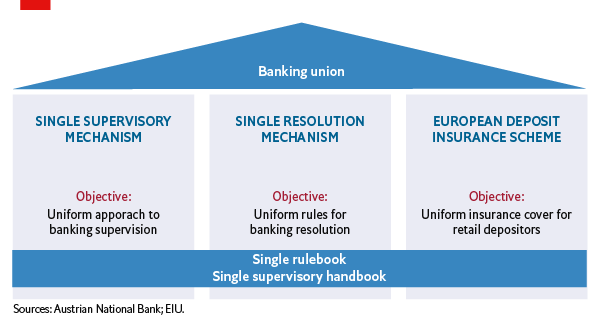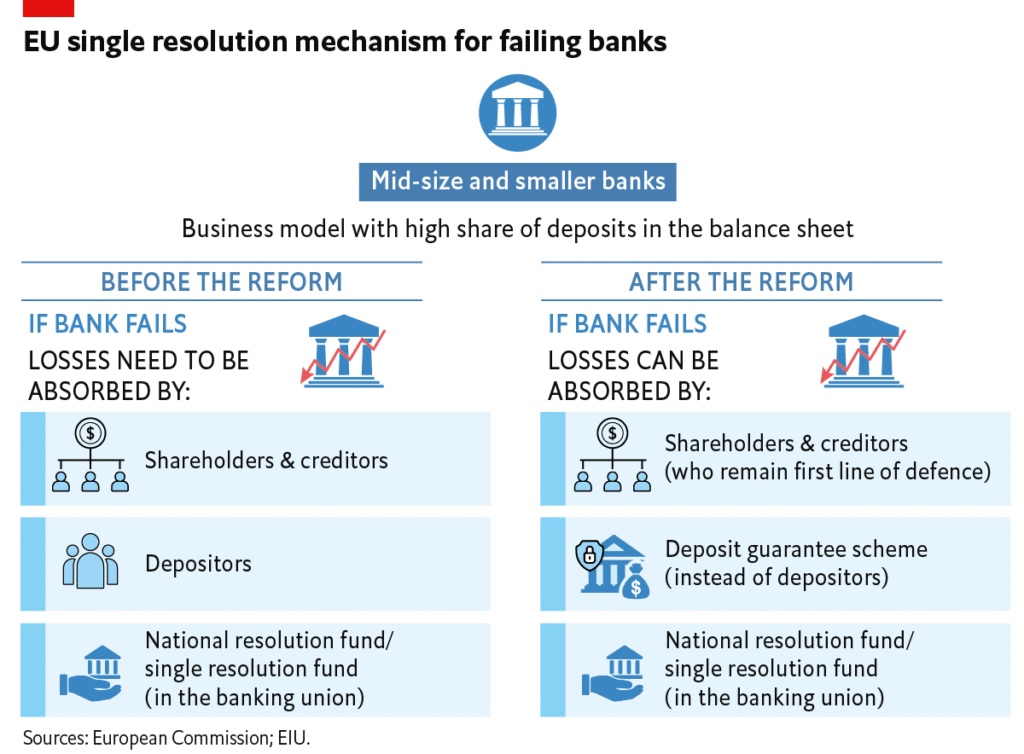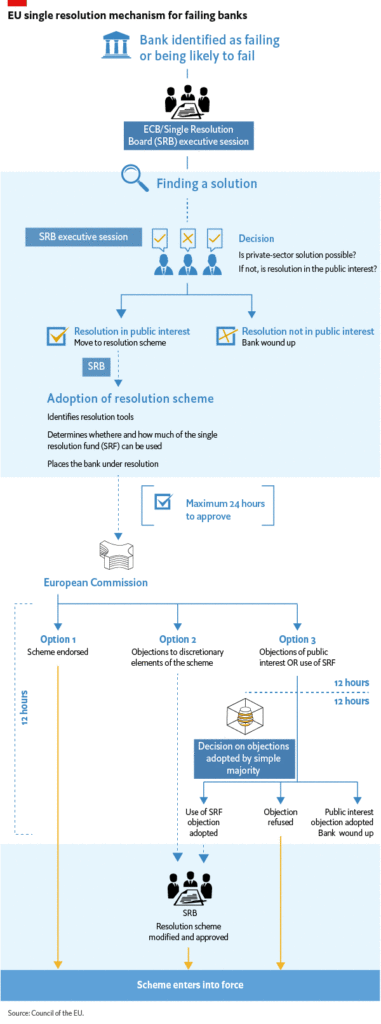
- The European Commission has published a proposal to strengthen the EU’s bank crisis-management and deposit insurance framework by making it easier to organise the market exit of a failing bank.
- The reform broadens the application of resolution tools to small and medium-sized banks and strengthens the use of national deposit guarantee schemes to shield taxpayers from the impact of a bank failure. It also introduces some radical changes to the hierarchy of claims in bank insolvencies.
- Crucially, the proposals do not touch on the controversial issue of an EU-wide deposit insurance scheme, which would be necessary to complete the EU banking union, a project started in 2012 in the wake of the euro zone crisis.
- The proposal is likely to change further before becoming law, most probably in late 2023. The completion of the EU banking union will remain elusive, as member states such as Germany will continue to oppose the project.
The EU’s financial system fared well during the coronavirus pandemic and Russia’s invasion of Ukraine. Today, financial institutions in the EU are well capitalised, highly liquid and closely supervised. However, the banking sector turmoil and failure of some regional banks in the US in early 2023 has highlighted the need to strengthen bank resolution rules so as to cover small and medium-sized banks as well as large institutions. On April 19th the European Commission published a legislative proposal to update the bank crisis-management and deposit insurance framework that has been in place since the mid-2010s, following a request made by EU finance ministers in 2022.

The Commission’s proposals focus on the resolution of small to medium-sized banks in case of crisis. In contrast to larger banks, and in particular systemically important banks, the financial regulation of smaller banks has up to now been relatively light touch. The latest proposals should help national governments organise the orderly market exit of failing banks of any size and business model. A cornerstone of the proposal is for governments to make greater use of banks’ own funds and domestic deposit guarantee schemes (which are funded entirely by banks), in an effort to protect taxpayers. The plan also widens the scope of depositor protection to include public entities (while keeping the coverage limit at €100,000).
The proposals introduce some changes to the current hierarchy of claims in bank insolvencies, or the order in which creditors should be paid from the assets of a failed bank. The ranking of the deposit guarantee scheme would no longer be preferred relative to all other non-covered deposits; all EU deposits would be ranked above other senior obligations. This is already the case in eight EU member states, but if the proposal is approved it would be extended to all 27. The change would further protect depositors by making it more likely that they will retain access to their accounts in case of a bank failure.
The European Central Bank (ECB) and the Single Resolution Board (SRB), the European banking union resolution authority, welcomed the proposals as they would make it easier for national authorities to manage banking crises.

Proposals fall short of completing EU banking union
The latest proposals deliberately do not address the controversial issue of an EU-wide deposit insurance scheme, one of the three original pillars of the EU banking union. EU member states launched the banking union project, alongside plans to establish a capital markets union, in the wake of the 2012 euro zone crisis. The banking union project also remains unfinished, with only two of its three pillars—the establishment of the single supervisory mechanism and the single resolution mechanism—completed. Progress on the capital markets union remains limited, with EU governments so far failing to establish a fully integrated capital market to complement banking, as envisioned a decade ago.
Introducing the third pillar—a European deposit insurance scheme (EDIS)—has proved far more difficult. Under current rules, bank deposits of up to €100,000 are protected in case of a bank failure, with the protection continuing to be offered on a national level. By putting deposit insurance on a European level, the EDIS was meant to break the relationship between banks and national governments, or the fact that sovereigns are exposed to bank risk, and banks are exposed to sovereign risk. This relationship led to the so-called “doom loop” in the early 2010s, which nearly ended in the break-up of the euro zone.
The Commission’s original proposal from 2015 envisioned a collective, supranational safety net, funded by banks according to their level of risk. While acknowledging that an EU-wide deposit insurance scheme was required to make the euro zone more resilient to economic shocks, several member states, including Germany, vigorously opposed the introduction of such a scheme. They argued that they did not want to burden their taxpayers with the potential financial fallout from a banking crisis in another EU member state. Before contemplating such a scheme, they demanded much greater fiscal consolidation efforts and much stronger bank balance sheets in the countries seen to be most at risk.
Completing the banking union will remain a distant ambition
The legislative package will now be discussed by the European Parliament and Council of the European Union, representing EU member states. The Commission’s proposal is likely to change slightly before becoming law in late 2023-early 2024. Finance ministers of several member states, including Germany and Austria, expressed criticisms towards the Commission’s proposal in its current form in mid-May. Political opposition to an EU-wide deposit insurance scheme remains very strong, and we do not expect any breakthrough on a collective deposit insurance scheme any time soon.

The industry analysis featured in this article can be found in EIU’s Country Analysis service. This integrated solution provides unmatched global insights covering the political and economic outlook for nearly 200 countries, enabling organisations to identify prospective opportunities and potential risks.





